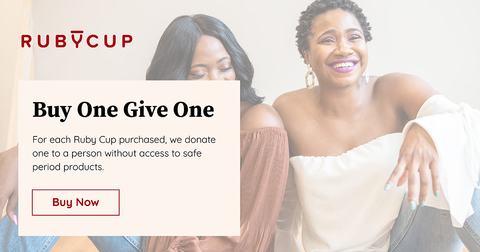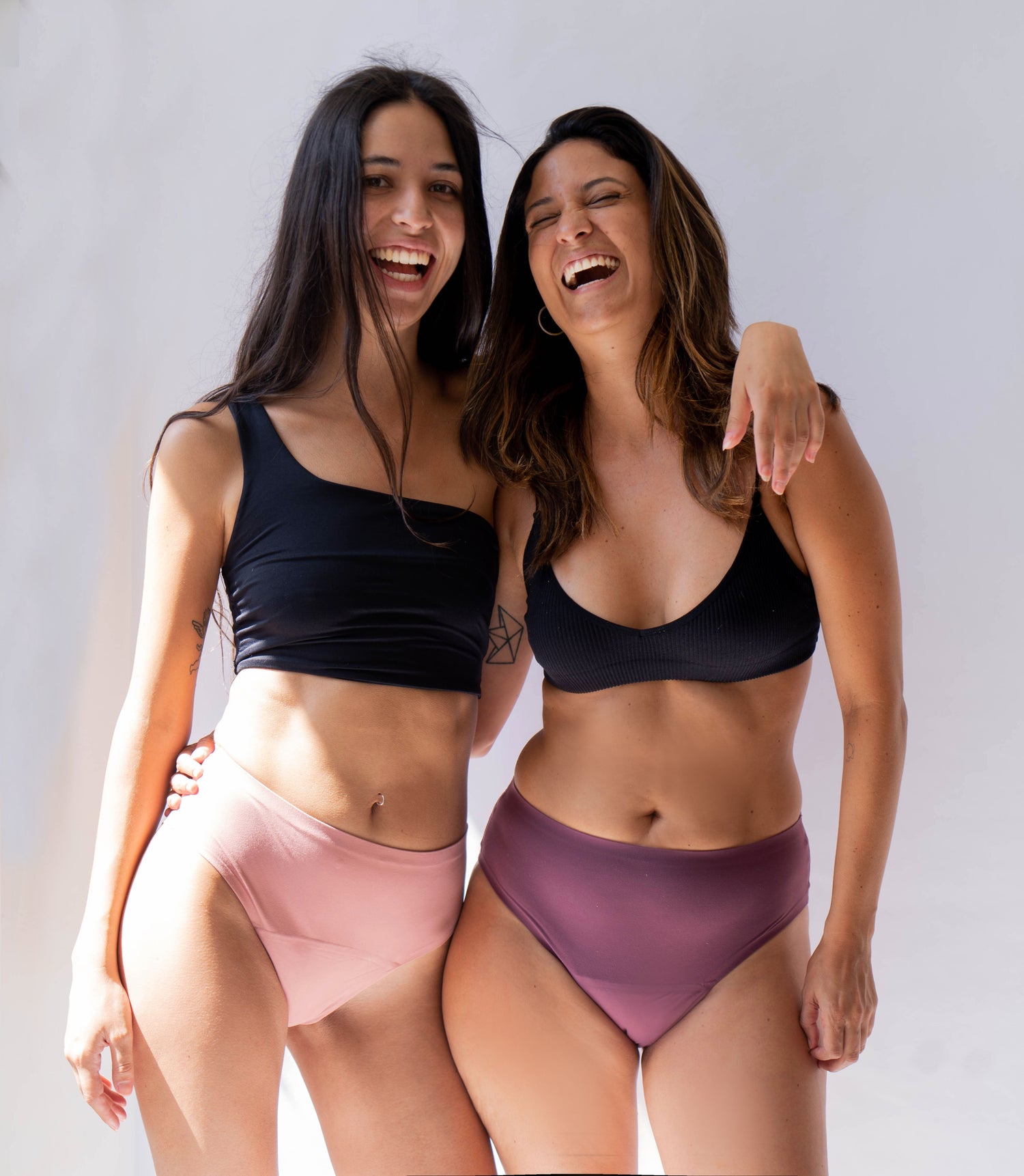After a week of bloat and fatigue, my period finally arrived. I’m happy about it. I’m wearing my menstrual cup, obviously. I love the start of a new cycle. The most complicated part of my day today was deciding what time to hit the swimming pool. That’s now. Back before menstrual cups were around, going to the pool on my period might not have even been possible. Even if it were, I’d probably be worried about my tampon string peeking out of my bikini.
It hasn’t always been this easy being a menstruator. Despite periods being a thing since the dawn of humankind, people who have them haven’t always had access to healthy and safe menstrual products. Before the early 20th century, people with periods had a lot more to worry about than what time they should hit the swimming pool.
Circa the 1930s, menstruators were given the gift of Leona W. Chalmers, an American actress and singer who, after deciding drama wasn’t her cup of tea, dedicated herself to designing and patenting the modern menstrual cup. That’s right – if you know your period history, you’ll know this means the menstrual cup has been around as long as the commercial disposable tampon.

© Harry Finley mum.org
Early menstrual cup devices
Before Chalmer’s invention, other devices were designed that used a cup-like device to collect menstrual fluid. The earliest apparatus had been a “Catamenial Sacks” in 1867. Menstruators would don this sac internally, holding it up with a belt and straps (a slightly more bizarre and less practical version of today’s easy-to-use menstrual cup). While some earlier inventions used flexible sacs, some used metal cups and, paired with the belt, these alternatives were neither discrete nor comfortable to use.
A woman against a world of pads
While the sanitary pad reigned and continues to reign the world of menstrual health, Leona Chalmers patented the first of what most closely resembles today’s reusable menstrual cup. Her rubber cup revolutionised the world of periods with her belt-free, invisible menstrual product. Feeling frustrated with the choice of menstrual health products, Chalmers became thoroughly invested in finding an easier and safer solution.
Her invention was made of latex rubber – a tougher cousin to Ruby Cup’s smooth, medical-grade silicone, yet easier to use than older versions of the cup. The production of her first patent in 1937 experienced a hiccup when World War II devastated the available rubber supply. She was forced to stop temporarily, but she continued to sell the cup after the end of the war.
It was hard to compete with pads. People with periods were long uncomfortable with the idea of touching – let alone inserting things into – their vaginas. The 1930s and 40s were not the golden epoch of sexual liberation and stigma-free periods.
The 1950s, a second life for Chalmers’s cups
Lucky for cup users, Chalmers didn’t let wars and stigmas kill her dream. She sold the rights to the design of the menstrual cup to Robert P. Oreck, who launched a new menstrual cup company in 1959: Tassette, Inc.
At a time when using the words ‘vagina’ and ‘menstruation’ in ads was strictly forbidden, commercialising the cup was no cakewalk. It’s still not easy to use those words freely now: the first commercial showing real (red) menstrual blood and mentioning the word “vagina” didn’t hit the screens until 2010. Tassette decided to launch an awareness-raising campaign and sent cups to nurses nationwide. In return, the nurses were asked to recommend and advise on the cup to people who were looking for menstrual health products.
Back then, people felt uncomfortable about emptying the menstrual fluid from their cups and cleaning it. And for many first-time users, it still is uncomfortable today. But in the 50s, they didn’t have access to the internet, blogs, and communities of other cup users to help them get used to the process like we do now. ‘Period’ was still a dirty word, and don’t even get me started on ‘vagina’. Since the cups were reusable, the few users who had cupverted weren’t buying more of them. In an attempt to compete with other disposable menstrual health products, Tassette Inc. designed the Tassaway, a disposable menstrual cup.
It was a good try for Chalmers’s cups to live a second life, but Tassette wouldn’t be the one to revolutionise periods in the long term. The company shut down in 1973, and menstruators in the United States were once again left without their beloved menstrual cups.
A new, sustainable resurrection of the menstrual cup
Since you’re reading this now, you and I both know that the end of Tassette wasn’t the end of menstrual cups. In 1987, The Keeper, a menstrual cup brand that still exists today, saw the cup half full and relaunched the product after a 20-year absence from the market. The 21st century saw the rise of medical-grade silicone use in menstrual cups, a blessing for menstruators who were allergic to latex rubber.
It wasn’t long before a growing number of companies saw the menstrual cup as an opportunity to reduce waste while helping women, girls, and those with periods have healthier and safer periods worldwide.
Ruby Cup joined the cause in 2011. Inspired not only by the sustainable and healthier aspect of menstrual cups, we saw it as a chance to de-stigmatise and help people with periods. We saw that what was stopping them from accessing menstrual health products (and going to school while on their periods) was being able to afford these products. If it’s up to us, the only thing periods are stopping is a sentence.
That’s why we’re the first menstrual cup company to launch a Buy One Give One programme for every single cup bought, no matter where it’s bought from in the world. That way, on top of the one cup purchased diverting over 2,880 tampons away from the landfill, we focus on the long-term positive impact, helping people everywhere have healthier and shame-free periods.
Periods and period products have come a long way in a short 100 years. Little by little, obstacles to menstruators living a worry-free and healthy life are being broken down by brave people like Leona Chalmers.
------------------------------------
Written by MAEVA CATHERINE CIFUENTES ON 3. MAY 2018
 Your Account
Einloggen
Your Account
Einloggen
 Basket
Basket




